Health in many dimensions
Health in many dimensions
Last week, I had chances to participate four health-related events. First event was DSL patient and Sakonakorn general hospital (as mentioned in last web blog).
The second event is a program called “For our friends”- a project that aims to educate and empower HIV-AIDS patients. This project is hosted by a monastery, the abbot worked with four community hospitals around that area. This three days and two nights program used the “modern training” paradigm of educating and motivating people. Ten working staffs and sixty patients were divided in small groups to participate many lecture, demonstrations and self-reflecting activities. The Abbot was the main facilitator for almost all the program. He worked as a social worker (rather than “old style preaching monk”) to advocate, mediate and enable the participants. By his reputation and faith, it was easier to motivate and to change people’s behaviour. He also motivated the public health workers to change their working style. For example, when educating infected patients about food and nutrition, he replaced the lecture style with the participating style. He asked people in each group to list 10 most favourite dishes that they always eat. Then he let the nutritionist to explain the good and bad nutritional affect of each food, and also how to modified the bad food to be better for HIV-AIDS patients to eat.
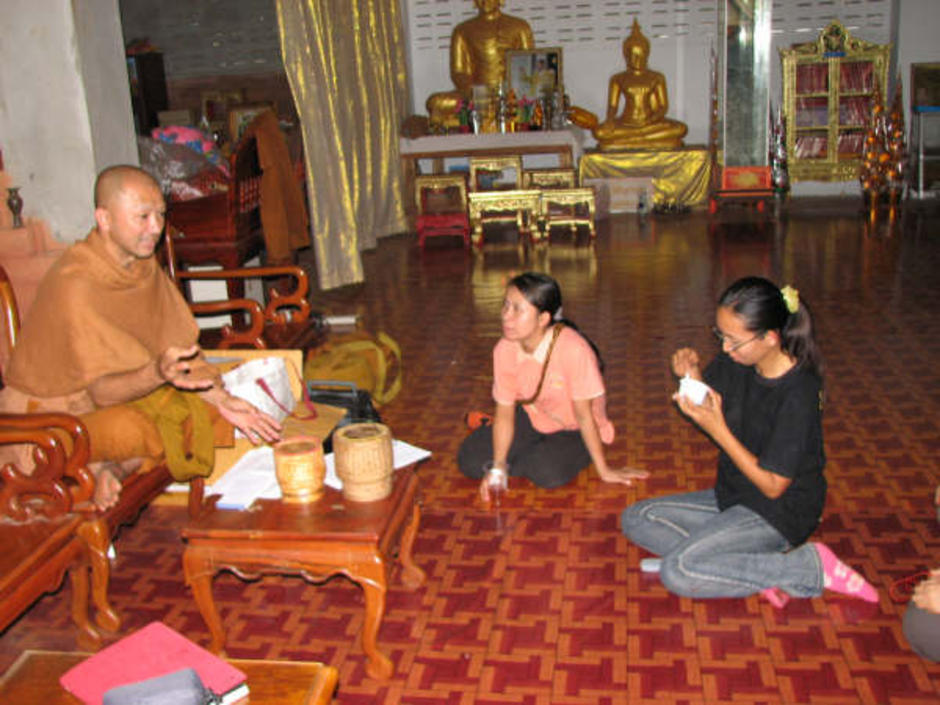
Phra Ajan Chatakorn and nurses from the community hospital working on the HIV/AIDS issue

"for our friends" training program
Thirdly, I interviewed the chair of Provincial traditional and herbal medicine group. He is also an abbot of Wat Srisaked, Sakonakorn. He believed in the ancient lifestyle. At that time life is peaceful, full of kindness, less selfish, respect the mother nature, and be mindful to consume the abundant of natural resources. He thinks that diseases and illness of people in present day were caused by the lifestyle that does not go accord with mother nature. He adopts the concept of “Dharma is nature” to his practice as a traditional medicine healer. Moreover, he also integrates the knowledge of herbal medicine, Isan’s traditional belief and astrology as the way to diagnose patient’s chief complaint. He thinks that this is ‘the holistic approach’. The abbot hosts a meeting for local and herbal medicine masters every month. (I will participate this meeting tomorrow). It’s very interesting event to see the movement of ‘alternative medicine’ to find their place in the community and to challenge the main stream modern medicine (the movement is stronger and stronger after MoPH (Ministry of Public Health) set up a Thai traditional medicine department since last decade, before that the local and traditional medicine master were labelled ‘illegal healer’ or ‘ghost doctor’. In INPAENG, there is also a herbal medicine master, Ms. K, she is a member of this group. She explained to me about this issue that nowadays it’s quite clear to the lay people that only some diseases or illness such as fatigue, muscle pain, constipation, food poisoning or any other non-fever disease are all right to seek care for local medicinal master. But the serious illness such as bone fracture or any kind of fever, they should consult the modern medical doctor.
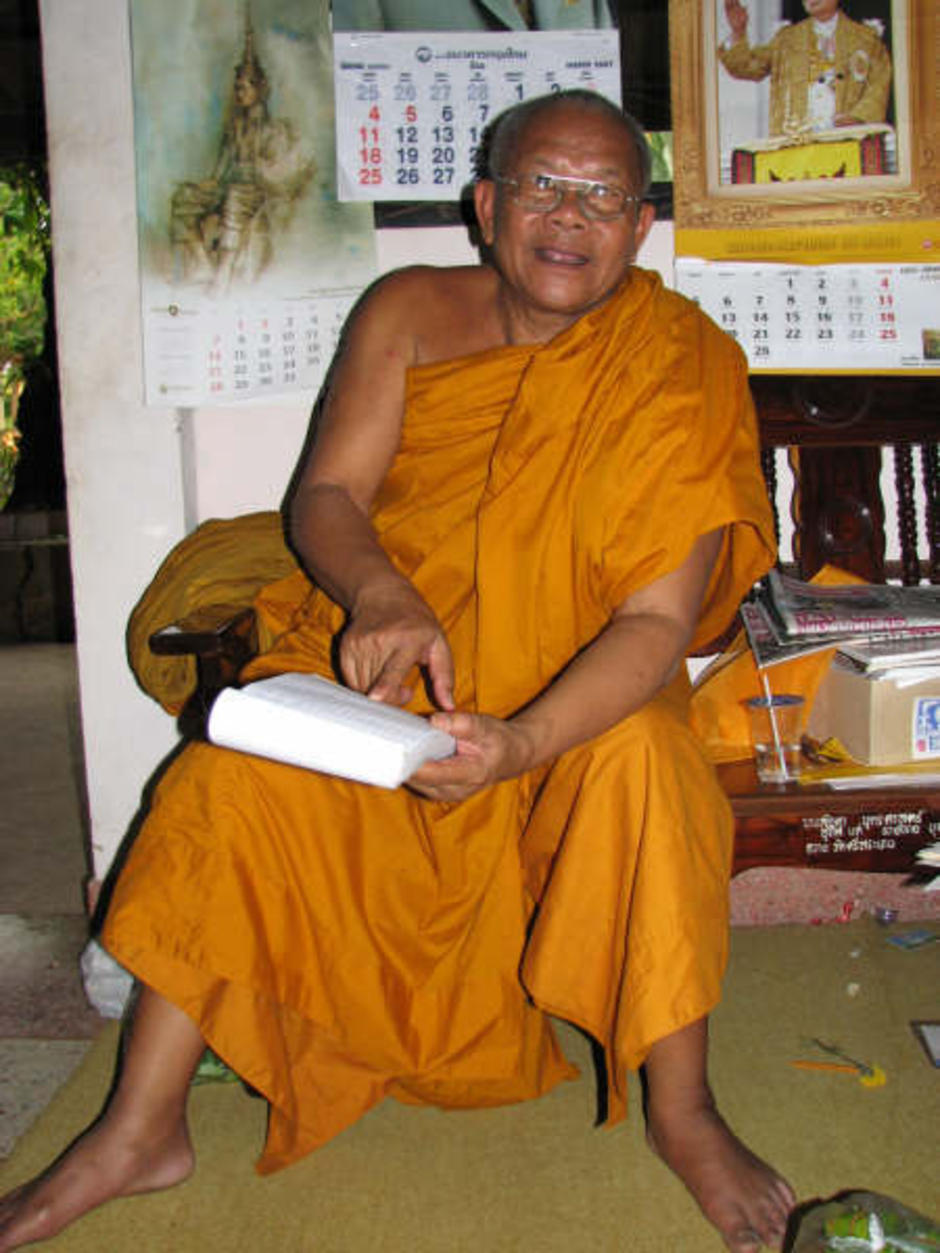
Phra Ajan Uide, the abbot and chair of Sakonnakorn Thai traditional Medicine society
Lastly, it’s my honour to join the ancient healing ritual called ‘Yao’ or ‘Phi Fah’. They believed that some symptoms (such as the haunting feeling or some psychological illness) is caused by nature spirit, ghost or supernatural power. The aim of the ritual is to plead with ‘Phi’ (ghost or spirit) to leave this patient and ask the ghost to bless that patient before leaving. The ceremony took place at the patient’s house. Almost fifty people were in the house; this includes the healer master, the healer assistants, all of the patient’s family members, the neighbours, and the people that were healed by this healer master. Some of them help preparing talisman (made from banana leaves) to use in the ceremony. Some of them worked in the kitchen to prepare meals. Some are the ‘Kan masters’, who played the Isan traditional musical instrument called Kan. (Some are just observers, like me). This ritual took more than six hours to finish. The healer master prayed and chanted to the holy spirits and begged them to bless the patient. The patient is an old lady who has tons of children and grand children. She was blessed by the master. She was blessed by her family members. At the end, she leaded all members to cast the spell on buckets of water to transform them into holy water. Then, every participant was sprinkled with that holy water by the patient. Surprisingly, there was a big rain at the climax of the ceremony (We are now in the middle of dry season, it’s quite unusual to have rain at this time of the year). The rain encouraged the participants that the Holy Ghost agreed with the blessing. Lots of symbolic objects were used in the ceremony. The glutinous rice, banana leaves may refer to the abundance of planting. The spade, the fishing instrument may refer to the power to harvest. The most interesting aspect to me is, this ceremony supply all psychological needs that a peasant could need. The Psychological support from family members, care from neighbours, and hope for the abundance in harvesting season are the most common things that a peasant ever wants. These symbols are all expressed directly and indirectly in this six hours ceremony. Moreover, at the end of the ceremony the patient was dressed with the same articles as the master and leaded all participants to make the holy water. This is very important aspect of the ceremony, because it was showed that the power was transferred from the ghost and the healer to the patient. At the end, she had power to control herself; she was transformed to an active people not a passive patient.
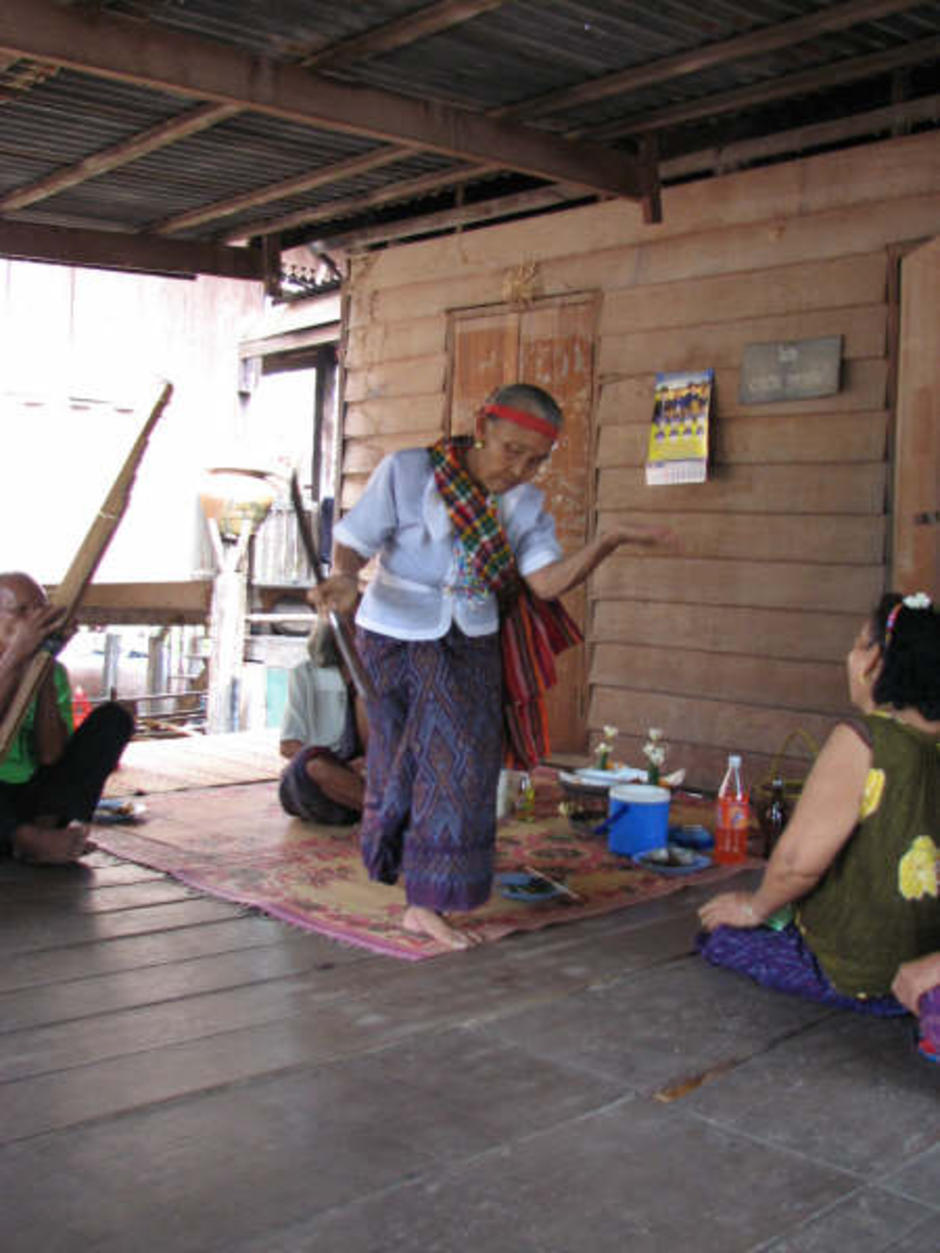
The Healer and Kan player

The Dance: Healer and Patient interaction

Many symblics objects involved in the ceremony
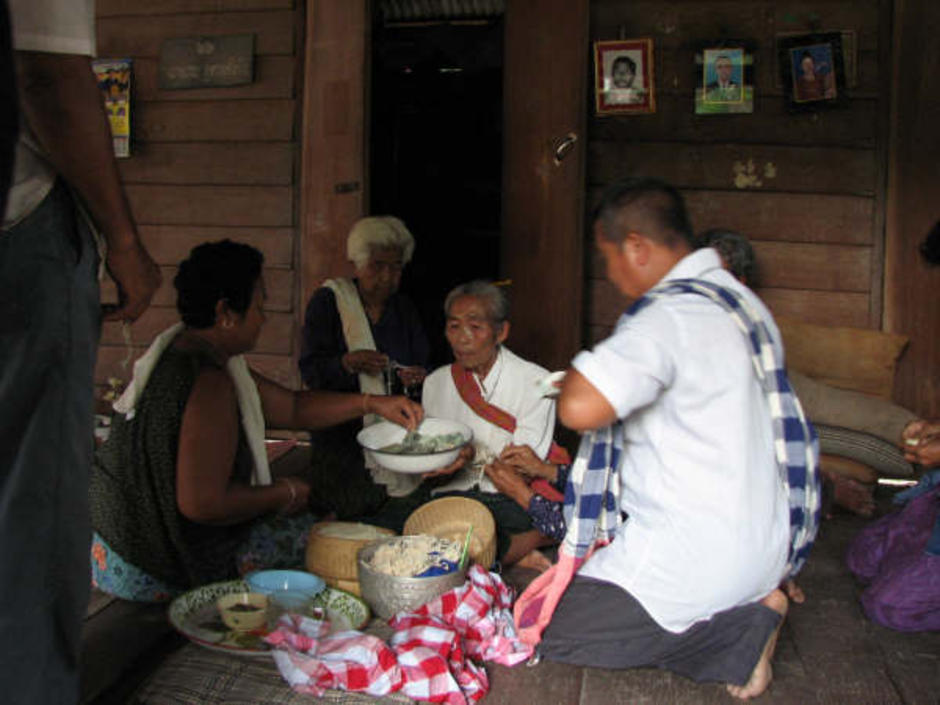
Healing an individual is healing the community

The transformation at the nearly end of the ceremony, patient has a red band and lead the ceremony: power shift
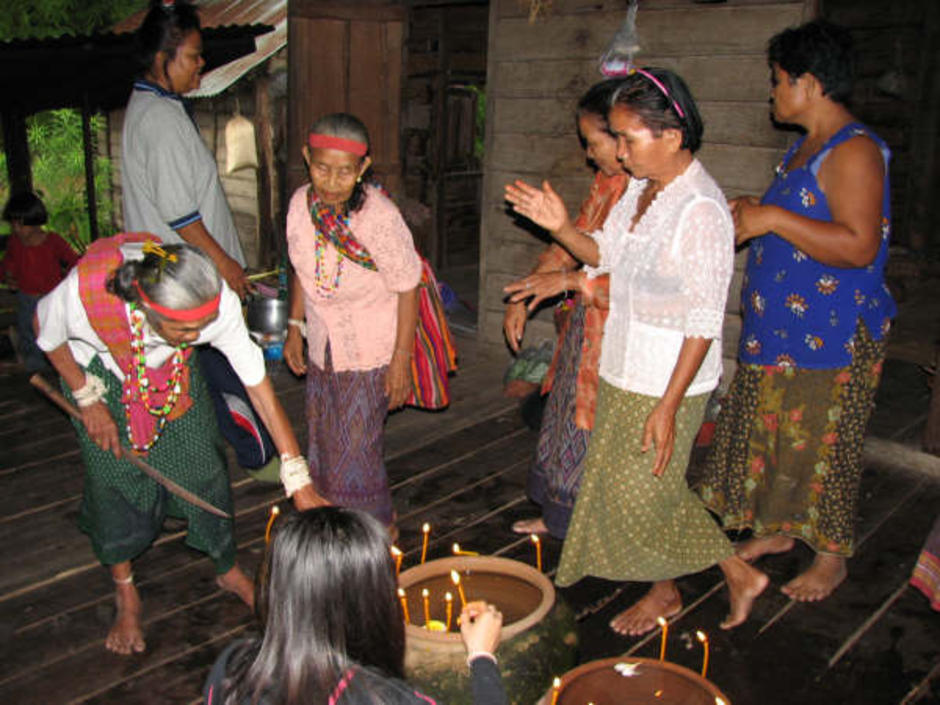
Now, the patient holds the sword (symbol of power) and leads all the people in the ceremony to make holy water
All four events gave me the insight of ‘the meaning of health’ in this area. Lots of things are waiting for me to explore.
ความเห็น (0)
ไม่มีความเห็น